"Stardust"
 Much like the multitudes of tiny, barely perceptible, stars sprinkled throughout the skies, the seemingly random thoughts and philosophies that sparkle from time to time in my head need some place to call home in the cosmos.
Much like the multitudes of tiny, barely perceptible, stars sprinkled throughout the skies, the seemingly random thoughts and philosophies that sparkle from time to time in my head need some place to call home in the cosmos.Thus, "Stardust" allows me to share thoughts and ideas from all of the ranges of human thought: personal, natural, scientific and various excursions into otherwise random thoughts. Some may have no beginning, no end. But others I hope that you might benefit through knowing.
Essentially, "Stardust" is my personal forum to talk to YOU; hopefully you will be a dedicated listener. You may not agree with me all the time - perhaps some of you never - but it might be fun for you to judge for yourself just how misguided I am in my wanderings.
I have had a rich life: art, poetry, music, archeology, paleontology, geology, microbiology, astronomy, astrophysics, environment. But richest of all are the humans that I have come to know and those with whom I have shared my life.
Please indulge me while I share just a bit longer.....
.....welcome to "Stardust."
Dr. Clay
-----------------------
Echoes: I Still Hear Christmastime
It was a simple and quiet walk in my forest, the trees now bare from the frosts of winter. There were echoes heard that wrapped my body and soul and gave warmth as I was led down my path guided by the light of the moon....stars, some of them bright, seemed vivid and lucid with song.
In the midst of this chaos, this world of today, I find myself immersed within the grips and grasp of turmoil, a clutching from which I cannot free neither mind, body nor soul. From the innocence of childhood and the aspirations and visions of such a bright future so many years ago, I find that I am growing old, my body changed, my passion and wishes still burning within this biological frail house of sticks. It is once again Christmas and I have watched the evolution of the human race from the warmth of endearment by family and friends, to political divide and the cold ignorance of what now has overtaken in the form of electrons flowing in unison through social media.
As a child, the season was cold yet warmed by the caring and compassion of my fellow man; greetings were shared at every pass and strangers became smiling friends as we neared the cherished holiday time, sacred and giving.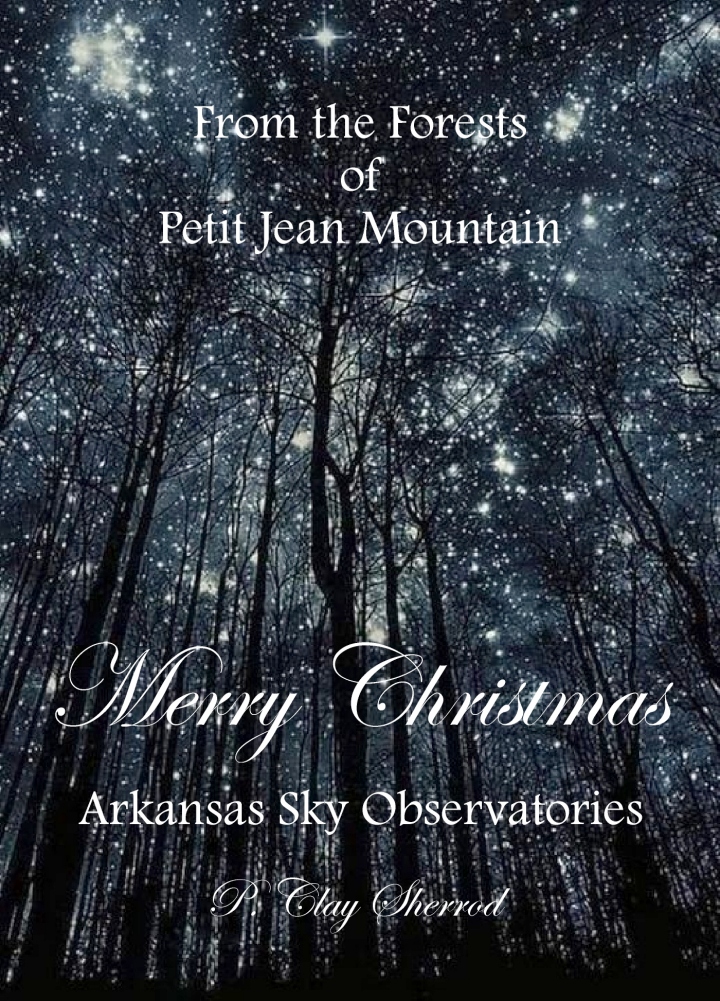
Life was different then, decades ago. Holiday mages conveyed the emotions of a Victorian Christmas, a tree glistening with tiny candles, as families cheered the night before Christmas, singing, dancing, drinking and laughing in the dim lights of old. We were dignified then.... our manners were significant and important, we dressed respectfully and the cherished music that celebrated the birth of Christ filled our hearts throughout the days and nights of yesteryear.
What is this rambling about? Very simply, it is testament to the fact that I have actually witnessed the evolution of our faith - the evolution of our celebration and respect of the Christmas season - in my short lifetime. My, how it has all changed: from peace, love and reverance to commercialism and self-satisfaction.
Within my lifetime I have experienced the true spirituality of Christmas and much of that has been the exposure and enjoyment of the classical music of the season. The classical hymns that were written centuries after the birth of Christ that became ingrained into my memory and the haunting visual memories that I still posses, were the incredible enchanting an indelible catalysts that created within me the respect that I have for this season.
As a musician myself I have learned to appreciate and respect all genres of music, yet there is something hauntingly important about those classic Christmas melodies that filled the winter air of my childhood. With it....everything was okay. The music soothed all of us, from the wealthy to the homeless; it filled us with compassion and hope. It paved in cobblestones the ways of our lives and led us through dark times, always remembering the reverance of the importance of something very simple: FAITH.
I hear those echoes.....I turn and face them, and my forest is transformed in my mind’s tapestry into the dark deserts of night, where cold winds brush across the arid, treeless sands of ancient times. There among my thoughts are the Kings, those wise men from the Orient who have traveled afar, bearing gifts to present to yet another greater King unknown to them; traveling field and fountain, moor and mountain following that yonder star. The beauty of their journey to meet a holy leader of all men becomes once again real to me..... as it did as a child when the music was transfixed into a permanent mural of what we know as Christmas.
Suddenly the silence overwhelms me; I must be still and listen to the absence of all things, other than the glancing kisses of winds across my trees. Through them is the Little Town of Bethlehem, so still it seems to lie. Above those dark, and dreamless streets I watch the silent stars go by..... and, yes I see it: an everlasting light from which those kings had been led to this simple place and there is something very overpowering about these words, this simple and emotional anthem, the words of which have never been forgotten.
Silent is the night.....all is vastly calm among the glistening stars and the hopes and fears of all those before me become mellow, as all is bright. Because ‘round yon virgin.....Mary and Child.... is the promise and faith of everlasting life. Yet through the silence a song of angels softly creeps; Hark! The herald of this newborn King is heard through the cold winds of night. “Peace on earth and mercy, mild God and sinners reconciled.... Joyful all ye nations rise Join the triumph of the skies.”
Yes. Nations rise; please regain our faith and join this triumph that fills our skies. Be as one, all people; take time to look down from the skies, and remember the little lord Jesus, asleep on the hay. It is once again time to let Earth receive her King.....let Heaven and nature sing while these ancient melodies stirring within our heads repeat our sounding joy.
These echoes.....haunting, familiar and deep; they transport the spirit of life from our minds into the peace that God has provided through this thing that we worship as Christmas.
“ God rest ye merry gentlemen, let nothing you dismay. Remember Christ our Savior was born on Christmas Day to save us all from Satan's pow'r when we were gone astray
Oh tidings of comfort and joy....” Through all these lyrics I am told “It is not too late.”
The old, yet always comforting ballads, these hymns of Christmas, never forgotten and always present as the strong reverberations of my mind, echoes of what really matters. Yes, I can walk through my forest, the skies dark and cold winds piercing the starry night as I gaze upward: Star of wonder....star of might, star of royal beauty bright.
It is there. Still there. Today we must have faith to see this wonderous sight that inspired Kings of distant lands to leave their riches and travel to the Little Town of Bethlehem two thousand years ago. You will not see this star, but it IS there. Have faith.
And I learned from this night in my forest that faith is a very simple gift, yet the greatest gift of all.... it costs nothing, it gains us no status except in the eyes of forgiveness of God.
We must once again during this Christmas season learn to follow that star: FAITH.
“O star of wonder, star of night, Star with royal beauty bright. Westward leading, still proceeding, Guide us to thy perfect light”.
The merriest of Christmas and never stop searching for your star.
PCS Dec. 2022
-----------------------
* * * * *
A LEGACY TO THE EXPLORATION OF NATURE
The 50th Anniversary of Arkansas Sky Observatories
1971 to 2021
------
Introduction
As the ruddy and mysterious Red Planet Mars approached the Earth in 1970 for one of the closest encounters of the two planets in modern times, a then-modest private observatory was rapidly being constructed for the study of its ever-changing atmosphere and the effect of that on the visible surface features of the planet. Equipped with a then-state-of-the-art high resolution refracting telescope and located in the dark skies near the North Little Rock, Arkansas airport, little did its founder know at that time the growth, impact and legacy that this scientific endeavor would accomplish over the next 50 years.
Educator and biological cellular scientist P. Clay Sherrod began an undertaking that would be unique in its impact on sciences, crossing disciplines of astronomy, biology, environmental sciences, geology, paleontology and even archaeology as the coming decades would pass. It would become the longest-standing and most productive private science research center of its kind in the United States by 2021.
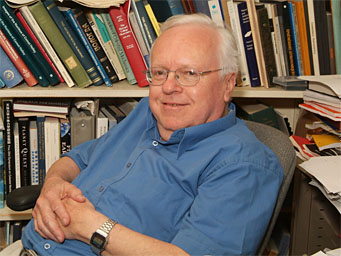 Dr. Brian Marsden / Harvard-Smithsonian Astrophysical Observatory
Dr. Brian Marsden / Harvard-Smithsonian Astrophysical Observatory
Dr. Carl Sagan / Cornell University
Early Years - The 1960’s and 1970’s
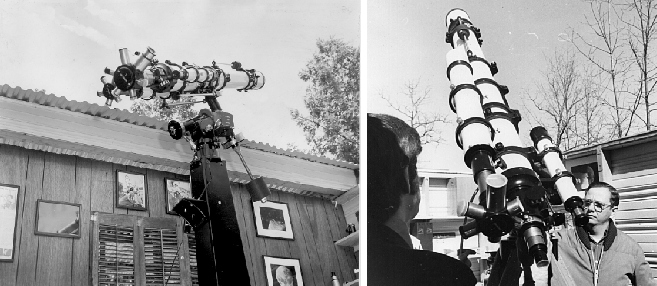
Figure 1 - the modest roll-off roof observatory (East Hillside Obs) that served as the first of a series ofArkansas Sky Observatories to be constructed over the fifty years that would follow
-------
It was the growing dedication that caught the attention of Dr. Brian Marsden, the Director of the Central Bureau of Astronomical Telegrams of the Harvard-Smithsonian Observatory complex. Today the Harvard Minor Planet Center (now under the governance of the International Astronomical Union [IAU]) has hundreds of “OBScodes: Observing Stations” which are designated to monitor hazardous asteroids and comets as they encroach upon Earth; for example the current four observatories of Arkansas Sky Observatories are designated as H41, H43, H44 and H45. In 2017 H45, atop Petit Jean Mountain in Arkansas, surpassed all other non-NASA supported observatories in the number of precision orbital measurements submitted on over 12,000 asteroids and comets in that year. Nearly all OBScode stations report perhaps a few hundred measurements per year other than the large NASA-funded surveys, but ASO has always contributed into the thousands annually.
Something about ‘being an astronomer’ in 1970

Figure 2 - Creature comforts of the ‘warm room” and office of ASO’s H45 on Petit Jean Mountain
-----
High Tech on the Horizon: Arkansas Sky Expands Science
As the science explorations from Arkansas Sky Observatories continued to grow into the 1980’s, not only was astronomical research and outreach still top priority, but the facility and efforts of its Director during the decade began to reach out into badly needed input and exploration in other divisions of the natural sciences, including geology, paleontology, environment and archaeology.
PALEONTOLOGY: Studying life from prehistoric past ages. Working closely with the Arkansas Geological Commission, ASO organized dozens of volunteers over a three year period to discover, extract and process the strata of Arkansas’ geologic past through the extensive fossil record, with specimens dating from the Cambrian Period (around 485 million years before present) to the most recent extinctions from the Ice Age, or the Younger-Dryas Period (i.e., the Woolly Mammoth and other fossils from northwest and southwest Arkansas) some 12,000 years before present. Arkansas strata through road-cuts, erosion and other excavations reveals one of the most complete and extensive records of Earth’s prehistoric biological past than any other location. Thousands of fossils were carefully extracted, cleaned, cataloged and sorted into a massive collection still at Arkansas Sky Observatories and shared with the Arkansas Geological Commission as part of its Index Fossil collection. Two scholarly research volumes, notably “Footprints of Fallen Giants” by Sherrod resulted from this research.
Footprints of Fallen Giants from the original research manuscript/Sherrod
------
ENVIRONMENTAL and BIOLOGICAL SCIENCES: Innovations for securing the future.
It has always been a mission at Arkansas Sky Observatories to explore and better understand the origin of the force of life, that point when inanimate proteins and “microspheres” of amino acids convert from the non-living, non-self-replicating complex world of the unliving into living and preservation-seeking organisms capable of propogating their own kind. Such was the lifelong studies of Carl Sagan and Edwin Salpeter at Cornell University, who greatly encouraged both the theoretical and when possible empirical research to a very young Sherrod at ASO. This pursuit has led to many monographs, research papers, and even music and artwork that has developed from the Observatories.
Figure 4 - The microbiological laboratory room at Arkansas Sky Observatories featuring digital scanning microscopes with both darkfield and bright field comparative analysis
-----
Since cellular evolution and mutation had always been the foundation of studies of the Universe at Arkansas Sky Observatories, research has continued over these five decades into molecular/cellular evolution within conditions that can exist through the expanse of space. Sherrod became well known and sought after for lectures, media and video interviews for discussions of extraterrestrial life and the evolution of worlds outside of our own solar system. Figure 5 - Some other publications in Environmental Sciences / Sherrod
Figure 5 - Some other publications in Environmental Sciences / Sherrod
-----
ARCHAEOLOGY AND RELATED SCIENCES: Prehistoric cultures of North America.
Extensive and groundbreaking archaeological studies were begun out of Arkansas Sky Observatories by P. Clay Sherrod beginning in 1980 when he was asked by the Arkansas Archaeological Survey to investigate possible celestial significance of some 12 known ‘rock art’ sites located in the mountains and near waterways throughout Arkansas; when it was found that there possibly could be some relation of the painted and carved glyphs to celestial events or objects, it was suggested that a larger sample of sites was necessary to confirm or suggest such relationships. Thus, working out of the University of Arkansas at Little Rock under the watchful eye of the State Archaeologist, Hester Davis, Sherrod embarked on a three year exploration of all waterways that carved through the steep mountains of Arkansas. From this exploration, over 400 new sites containing pictographs or petroglyphs were found and documented and added to the Arkansas State Registry of historic places, recording all glyphs and artifacts found in those areas, particularly rock cliffs in which small natural shelters existed.
Figure 6 - The rock art study by Sherrod: Motifs of Ancient Man / The Toltec Module (R) study by Sherrod and Rolingson
-----
Figure 7 - A sample of other archaeological publications by Sherrod through Arkansas Sky
-----
PUBLICATIONS: Books, manuscripts, popular writings and monographs by P. Clay Sherrod

LECTURES AND PRESENTATIONS: Public and educational/institutional.
At its height, Sherrod was presenting as many as 10-12 public lectures weekly across the United States and occasionally in other countries. In more recent times, many popular lectures have been presented via video recording or video conferencing throughout several countries in Europe as well as the United States. There has never been any fee or charge required for any of the over 10,000 presentations and lectures given, and typically even travel costs were waived for educational and civic organizations. Groups include civic groups, educational entities, clubs, colleges, schools, churches and even retirement homes for the elderly and disabled.
PUBLIC OUTREACH: Reaching millions through electronic and social media.

Facilities, Instrumentation and Projects of Arkansas Sky Observatories
--------
Arkansas Sky Observatories East Hillside - Constructed 1970
East Hillside Observatory was constructed in 1970 and saw first light in April of 1971, with dual observatories side by side. This one pictured features a 5-inch Unitron photo-equatorial refractor on massive German equatorial mount. This facility was completed in time for the 1971 very close apparition of the planet Mars, the study from which comprises the first research journal from Arkansas Sky Observatories. The 12 x 16 foot building featured a full roof roll-off system that was guided and supported with warehouse garage door rails and wheels. This observatory served thousands of people from the community and local schools via schedule sky tours and demonstrations.

------
Arkansas Sky Observatories Edgewood Observatory - Added 1973

Arkansas Sky Observatories Indian Hills - Added 1980

Arkansas Sky Observatories Conway West Robotic Automated Observatory (H43) - Added 2000

Arkansas Sky Observatories Petit Jean Mountain (H41) - Added 2002
Located at the north brow of Petit Jean Mountain, Arkansas, ASO H41 features a 0.4meter Meade LX600 f/5.6 custom astrographic Schmidt-Cassegrain telescope with an Astrophysics AP1600 servo robotic mounting; a wide field APO refractor is used for comet imaging. This facility is 100% automated and is operated via remote operation from the offices of H45
Arkansas Sky Observatories Cascade (H44) - Constructed by Brian Sherrod 2004
Arkansas Sky Observatories’ H44 Cascade Mountain Observatory incorporates an enormous German Equatorial custom 100% totally robotic mount (seen with 16 inch testing telescope at left) that weighs some 1200 pounds.
The final telescope is a custom fabricated f/4.5 20-inch Newtonian; all design work on this telescope was done by the late Brian M. Sherrod

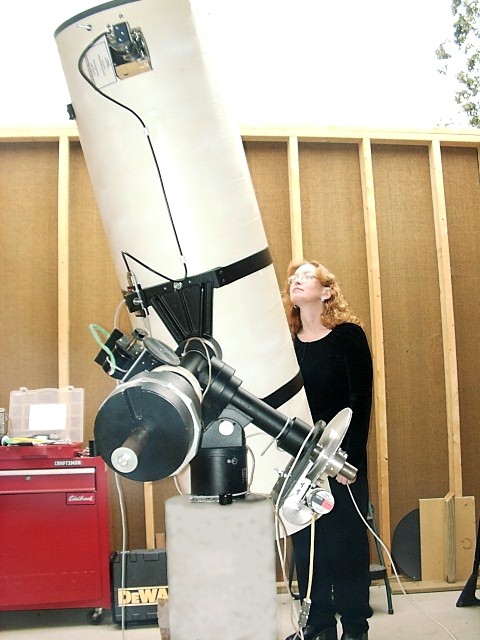
Arkansas Sky Observatories Petit Jean Mountain South (H45) - Added 2005
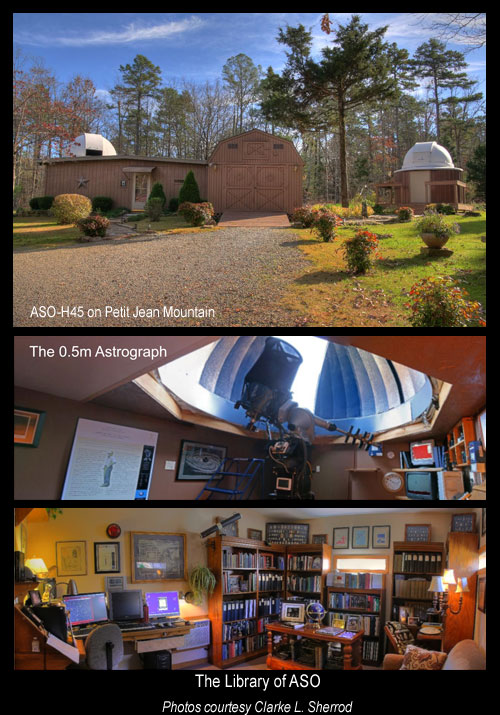
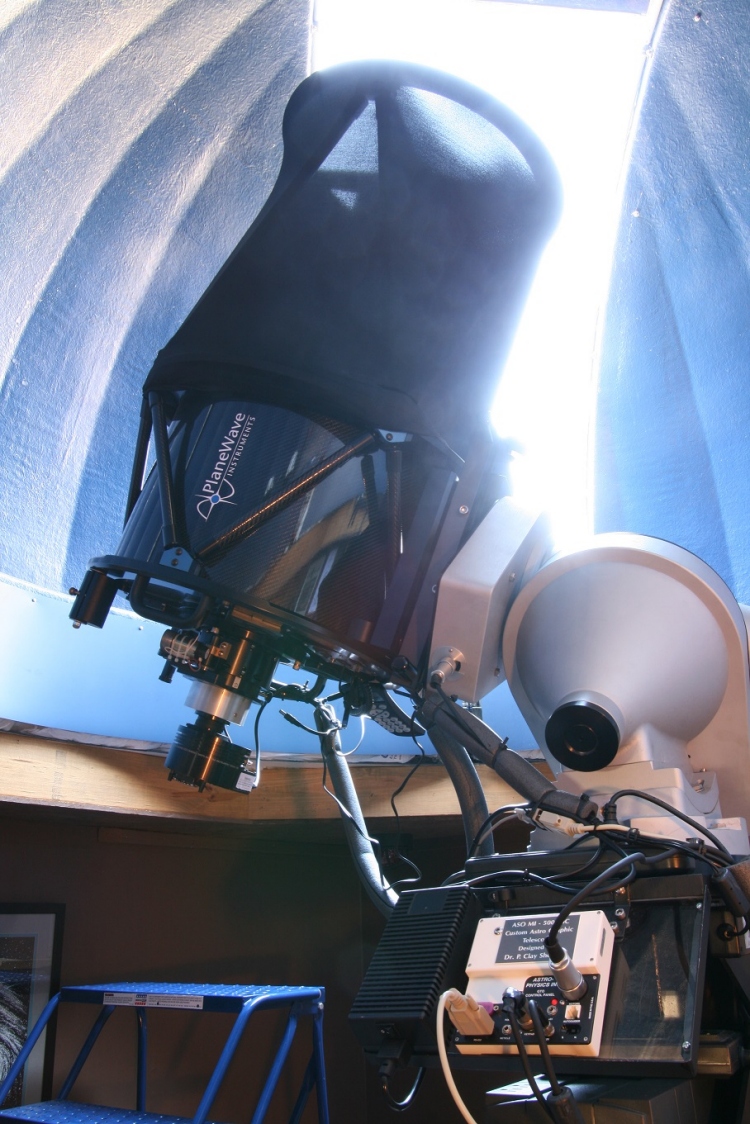
* * * * * *
Thank you for Fifty Years
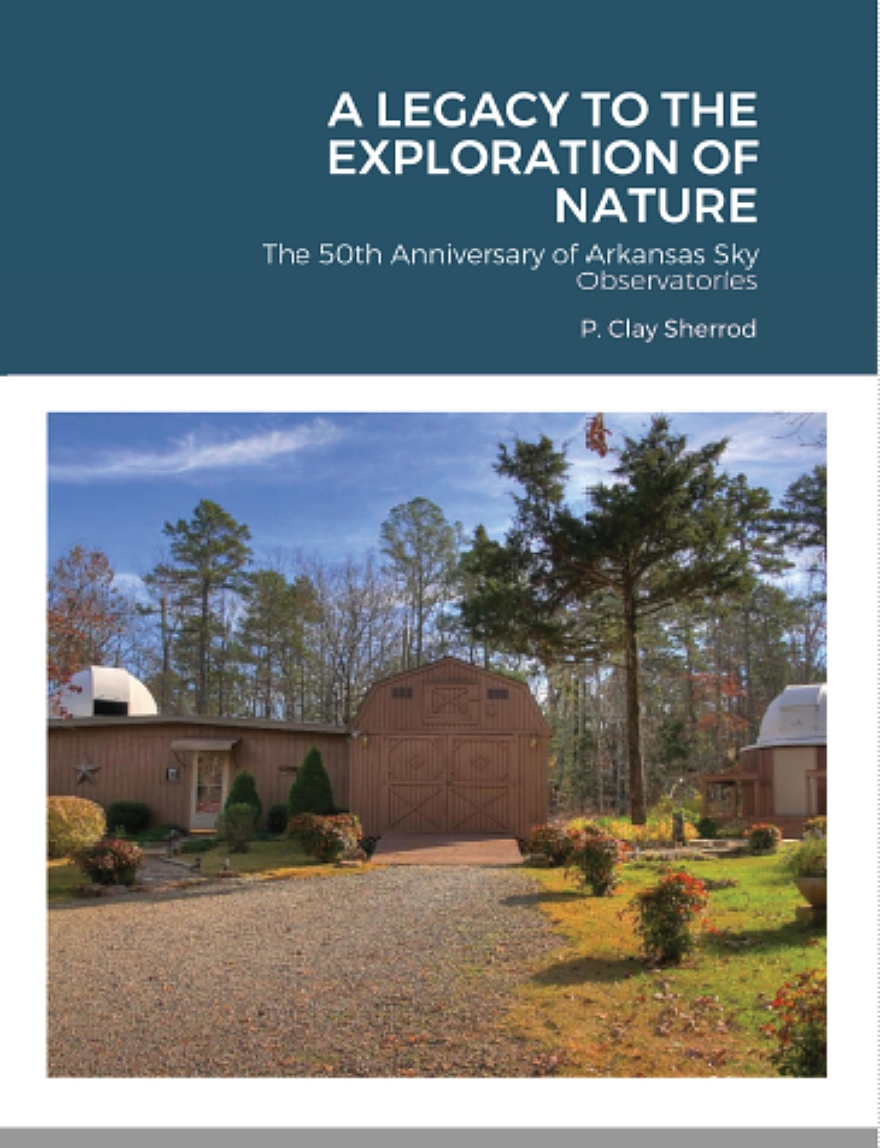
P. Clay Sherrod, April 2021
------
-----------------------
So You Think That You Miss Fracking?
by P. Clay Sherrod
Arkansas Sky Observatories, Petit Jean Mountain
Have you ever spent time in the Badlands of North and South Dakota? Without question the overwhelming natural beauty is unique all of the world.....it is truly God’s country. Open ranges with rugged valleys and mountains and vistas that are reminescent of cowboy days long gone. Buffalo roam; deer and antelope play. Or do they any more? The most incredible landscapes of Earth have a new resident and the cowboys and native Americans of the Badlands are moving out because of this new resident.
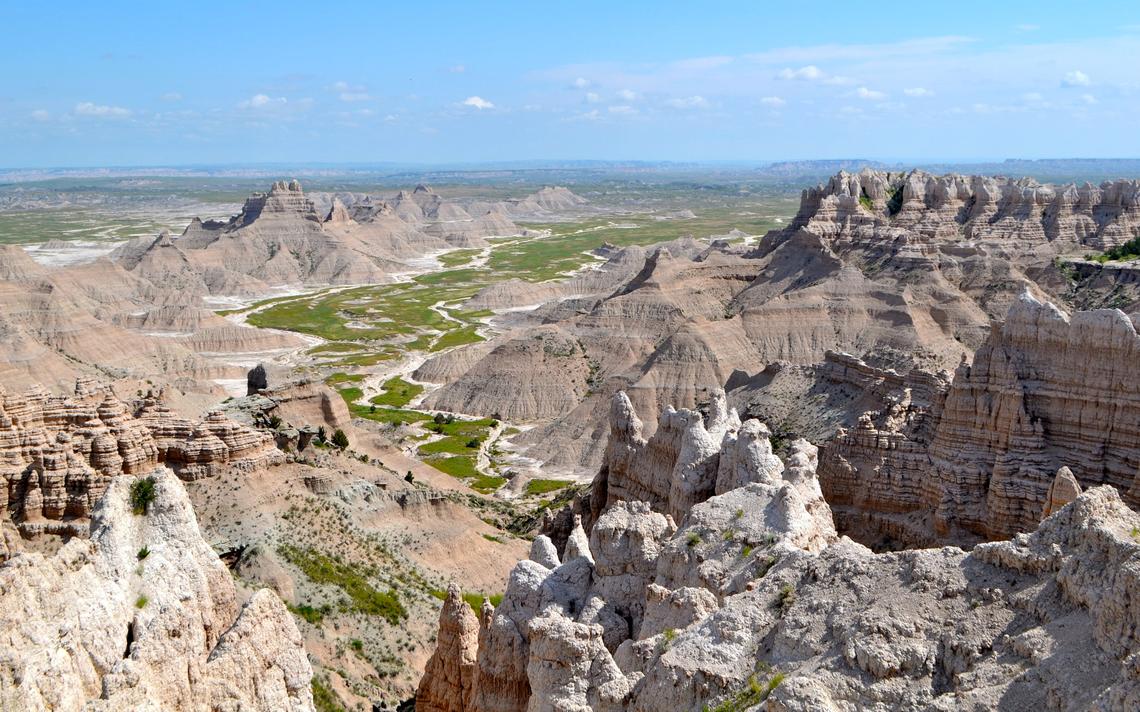
The Dakota Badlands - some of the most impressive vistas left on Earth. Courtesy North Dakota Visitor Bureau.
------------
Here in Arkansas, it seems like only yesterday that traffic was backed up behind tankers and drilling rigs, the earthquakes that shook the ground and damaged homes in the northern parts of Conway County were routine happenings. The noise, the rumbles of dynamite and drilling and the 24-hour glare of the sun-competing flood lights around every turn of what was our peaceful and beautiful rural highways.....only a few years ago. It was extraction of oil and gas out of the ground under us - FRACKING.
Then, as suddenly as it came, fracking left Arkansas and moved on to other places and now there are battles being fought over land rights, water purity, earthquakes and all those things that had become daily nuisances here in our land. But now it is gone, and our luscious lands are calm again....peaceful.....serene and beautiful.
By the time fracking - the process of squeezing out every last drop of natural gas and oil out of prehistoric shale deposits of petroleum from dead and compressed living things millions of years ago - left Conway County, I was pretty much fed up with it; the highways were suffering, peoples lands and homes were suffering, the land was being scarred, and the water was being used up and polluted.
From 2005 through 2012 over 5000 new wells were drilled into the deep ground below Conway County, some straight down, others at angles, sideways, cutting across property lines where gas was being extracted sometimes without landowners even knowing that gas reserves under their proper was being tapped horizontally from wells hundreds of yards away.
When the rigs packed up and left, and the gas wells were capped and controlled, many sealed off and unused, it left many residents unhappy about what just happened; in less than one decade there were fortunes made and money lost; there was property and fresh water that was once desirable that no longer is. Some did well - new boats, fancy cars and home improvements were in full swing. Others did not do well and many lost their jobs and their financial stability.
This is not a political statement nor endorsement; we need energy sources but need need them in a responsible manner. Eliminating fracking is not "going green".....it is preserving our Earth for future generations.
I do not miss fracking. Not a bit.
--------
Nonetheless, it reared its gaseous head again to me in 2020 when I somewhat accidentally ran across a night time map of the United States. There, in the northwest corner of the most beautiful and unspoiled lands of America is a “nest” of lights on the nighttime map, this concentration comprising almost the entire 1/6th of the state. The lights that you see on the map are brighter than night time Manhattan as seen from space.
What is this bright patch in the western USA? This bright area did not exist ten years ago.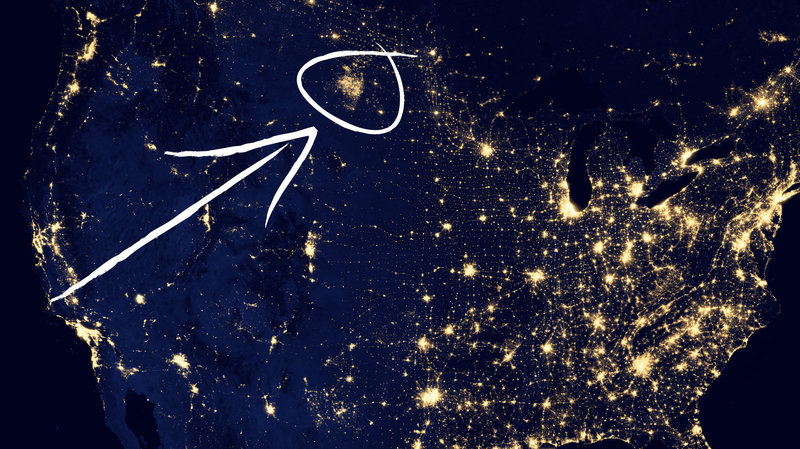
These are the reminders of the horrendous scars of fracking; thousands of workers working 24-hour shifts in dangerous conditions to maintain a profitable flow of gas and oil for the United States.
But what you are seeing in all this brightness in otherwise untamed buffalo country is NOT simply outdoor lighting; much of it is of course, lighting the drilling and non-stop surge by the petroleum industry to obtain their wealth in the energy industry.
The MAJORITY of the lights that you see from this maps are from an absolutely disgusting source: these are the brilliant FLAMES from intentional burning off of excess gas from the flowing, the gas being deemed too expensive to contain in tanks or piped out, and thus set on fire, a process known as “flaring.”
Not only is flaring lighting up the night sky in the western badlands, but in the burning process, the flaring is producing enormous amounts of carbon dioxide, carbon monoxide and the natural methane from the natural gas as it escapes into the air.
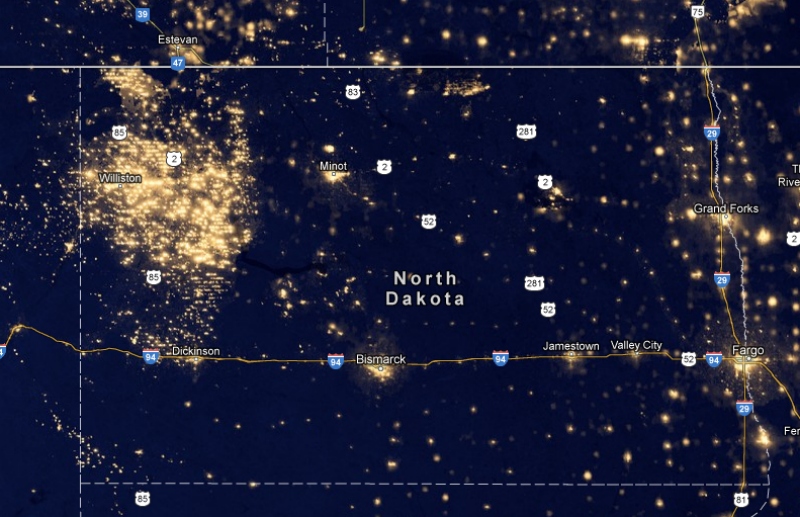
So, at least in Arkansas, fracking may be gone, but the long term effect of its existence will be felt for generations into the future; the noxious gases are heavily contributing to the greenhouse effect which is slowly warming the average temperature of our planet, resulting is evaporating oceans and melting polar ice caps.
If you find yourself missing the daily ground shaking of man-made earthquakes, the tiny cracks that suddenly appear under your house and the disappearance of your once pure well water, then just look to North Dakota and see where much of this has now landed. It is no long “our problem” but without any doubt this type of industry is a problem for the future existence of mankind.
--------
P. Clay Sherrod is an astronomer and environmental scientist who has operated Arkansas Sky Inc., for fifty years; he is the author of 37 books, his latest on the subject of man-made destruction of Earth’s environment and the results of overpopulation on the future of our planet: Human Population and the Case for Global Warming, 2019 ( http://arksky.org/publications )
October 24, 2020
------------
The Mysteries of Two Interstellar Visitors
by P. Clay Sherrod
In 2017 for - so far as we know - the scientific world was witness to the passage of an object from what might be the deepest recesses of space, an interstellar visitor that was discovered in that year by the large telescopes in Hawaii.
Oumaumau, Hawaiian for "Scout" (Pronunciation: "Oh-moo-er-moo-er") was one of the most intriguing and odd objects ever seen - cigar shaped and with very low density and high reflective surface, some 1300 feet long; when it flew in its gravitationally-bent curve by our sun it was flying at the remarkable speed of 196,000 miles per hour.
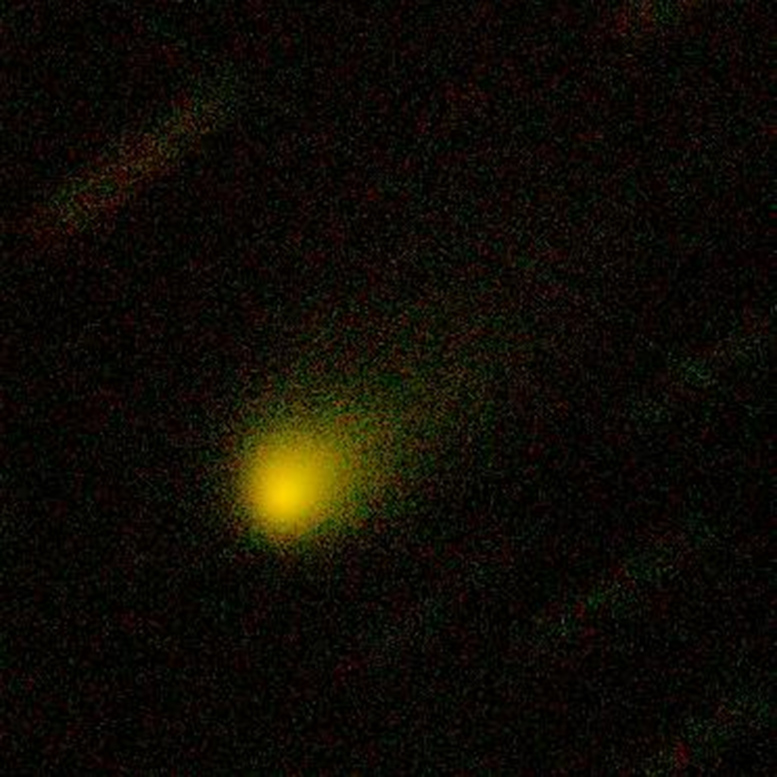
Photos: Elongated Oumaumua (ESA artist rendering) and Borisov (Hubble Telescope photo)
-----------------
By all counts, after that as it headed back into the depths of space it should have begun to slow down - but it did not, it accelerated unlike any object that we have before seen. Speculation arose as to the nature of this object, but scientists (being the wary discipline that they are) avoided any mention of this object maybe NOT being nature....perhaps alien in nature.
I was not one of the silent ones, and many were thinking precisely what I had on my mind:
"I am reminded of one of the best Star Trek movies made: "The Voyage Home" (1986) in which the Earth is on the eve of destruction by a seemingly very, very low tech "propane tank looking" spacecraft of city size proportions, steadily coming closer and closer to Earth. This enormous dark vessel appears to be suffering from the wears of time and space and has nothing unusual about it other than its size and its ability to periodically come by Earth and check on the humpback whale population.
"From what I can gather, the size appears just about right for Oumuamua.
"At any rate, we shall at some date be scrambling for "just the right thing to do" when something artificial does come in from deep space. At some point, as I have stated before, we are going to have to come to a realization that not all objects we are going to see in the future are necessarily natural (P. Clay Sherrod 2018)...."
But as asteroid orbital astronomer Bill Gray replied: "I expect we'll have to do that eventually. But I _really_ doubt this is the object that's going to do it. It looks more like a natural object doing something head-scratchingly weird, as natural objects sometimes do. It_did_ come from another star; weirdness is to be expected. We're still
well within the realm of the naturally explainable."
------
Today, two years later, we still have no idea exactly why Oumaumau (properly now identified as 1I/2017 U1) behaved the way it did, nor why its physical characteristics were so unlike anything we had ever seen before.
While still "head-scratchingly weird" yet another interloper has been found this year, this one clearly from interstellar space beyond our most distant planets and clearly cometary (i.e., it has a tail) in nature.
C/2019 Q4 Borisov, discovered by Russian amateur astronomer Gennadiy Borisov, is now approaching our Earth's orbit, and appears much larger than Oumaumau with a central diameter of one mile across. It is speed toward us in a hyperbolic path at over 72,000 miles per hour and will pass closest on December 8 of this year.
Whether something has changed far outside our solar system to "throw" these objects our way, or if our technology has suddenly evolved to where we now recognize them as exo-planetary objects from other stars is something we do not know.
But we have now seen two in our lifetimes, both within a short span of only two years. The question remains: what are they, and why are we suddenly seeing objects passing so similarly through our solar system from deep space?
October 2019
* * * *
------
BRIAN MORGAN SHERROD, SR.
Vilonia, Arkansas “He who feeds a hungry animal feeds his own soul" - Charles Chaplin
Every email, letter, every written word that he put on paper ended with that phrase, words that Brian Morgan Sherrod of Vilonia (brother of Clay Sherrod of Petit Jean Mountain) lived by and instilled into others as to the importance of appreciating all life over and above our own.

And there is no doubt that Brian’s soul was entirely satiated from the love he gave to all creatures on Tuesday, May 5 when he passed - the result of complication from a very severe head injury he suffered in January - from this world he had made so rich for others with whom he shared.
Brian leaves behind his wife of 27 years Tamie of Vilonia, Arkansas, son Brian, Jr., and daughters Amanda Howard, Nina Sherrod and Brittany Moody; he was preceded in death by his son Cory Johnson and sister Sylvia Inmon. He is survived by his brother, P. Clay Sherrod and their mother Betty Jo Sherrod.
Brian worked alongside his brother and others all his adult life in the pursuit of astronomical excellence and he was solely responsible for converting over all Arkansas Sky Observatories to the "new age" of the computer controlled robotic telescope and observatory operations in 1999. He established the very first ASO website in 2001 and maintained it until retiring about a decade later.
To say that Brian Sherrod had an amazing mind is an understatement as all who knew him quickly realized; at age 14, long before home computers, he dismantled one of the first programmable Texas Instruments pocket calculators, reprogrammed it, and used the electronics to construct a fully functional programmable machine that served as Arkansas’ first astronomical computer. He was a master film photographer, published and known the world over for his remarkable prints that stimulated the senses; an avid Ham Radio operator and organizer for hams across the United States, Brian learned to completely design and build both old and new equipment; his hobby of love was restoring vintage radios for which he not only got them working again like new, but could actually cut open the antique glass tubes and rebuild them entirely so that they could function.
His diverse interests through life afforded him the opportunity to drive one of the largest earth-moving vehicles ever made while working at Big Rock quarries at a very young age, serve as “DJ Brian” in Little Rock nightclubs for over a decade of nighttime excitement, and ultimately develop the essential computer programming for Arkansas state, county and municipal governmental operations at every level, these still in use and maintained by Tamie today.
Brian loved Petit Jean Mountain and spent countless hours on the plateau searching, discovering, photographing and relating to nature from age three until shortly before his untimely death.
He helped establish the Arkansas Sky Observatories’ network of four observatories across Arkansas and had earned a Harvard Minor Planet Center designation – H44 – for his large observatory on Cascade Mountain in Faulkner County.
But Brian Morgan Sherrod was best known for his heart, both for his fellow human and for his best friends – the canines of the world. He never met a dog that he did not love. His compassion for his fellow man and for those furry friends of man surely provided one of the richest souls to ever depart this Earth.
May, 2020 by P. Clay Sherrod
-------------
The Case and Cause for Global Warming
by
Overview
Massive country-sized glaciers fall magnificently into the polar waters around them, one by one, eroding the great masses of ice that we have come to know as “polar caps” of Earth. Massive shelves of prehistory in frozen state are finally giving way to the warming blanket of air surrounding our planet, the results of which are going to be catastrophic for future generations of all living things. The cause of the glacial erosion is very simple: human population explosion and the results of human demand and consumption.
The way to stop this: non-existent. The nonsensical “going green” movement should have begun in the early 1960’s when scientists first sounded the alarms about this potential global disaster; putting into place an even more ludicrous plan such as “The Green New Deal” is nothing but political rhetoric…it is not a solution, nor any steps toward a solution.
In fact, the problem is so large – planet sized, so to speak – that no effort short of the elimination of the human specie will stop the cycle.
Global Warming
As blizzards blanket northern locations, some the worse on record, each year, it is quite easy for the majority of the lay public to confidently assess that there is no such thing as “global warming” or put another way: Climate Change. Looking at any specific location covered in record breaking ice for any short time is nothing less that watching a pesky fly at the tip of your nose while the charging hippopotamus has targeted you for annihilation. The fly means nothing; the hippo everything and its momentum cannot be stopped.
According to NASA’s Goddard Space Flight Center, the average temperature of the entire globe of Earth has steadily risen by 1.4 degree F. since 1880; at first the rise was gradual and only slightly less than a tilt from linear; but looking at Figure 1 (Berkeley Earth www.berkeleyearth.org ) the sudden uptick in annual warming for both land and water is obvious beginning about 1975-1980.
Courtesy www.BerkeleyEarth.org
Often overlooked in climate discussions by media outlets and casual conversations about the implications of the warming trend is the even greater long-term influence of ocean warming which has become increasingly significant and dangerous for the future of mankind.

-----
Warming water exponentially affects the overall climate in several ways:
1) the evaporative index of the oceans and seas in terms of total surface area of water evaporating into the atmosphere increases;
2) water, being denser than air, retains heat far longer and this warmth circulates with the circulating currents of the oceans, including into the polar waters of the planet;
3) increased warm waters have a natural ability to radiate and dissipate heat into the surround air and land areas, thus warming glacial regions to what may be an alarming degree.
In fact, this warming near the arctic waters is dramatic and should have served as a wake-up call to Earth as early as 1960, when the average water temperatures began rising exponentially and continue to do so. In the past six decades, the average temperature of the arctic ocean – vital for maintaining the northern ice shelf and northern glaciers – has risen a remarkable three degrees Centigrade. (Figure 3)

Glaciers and Ice Caps – Earth’s Natural Reflectors
Figure 4, below, demonstrates graphically the tonnage decrease in the SOUTH polar cap from 2002 through 2017 – ice loss of over 127 gigatons each year over a 15 year period.
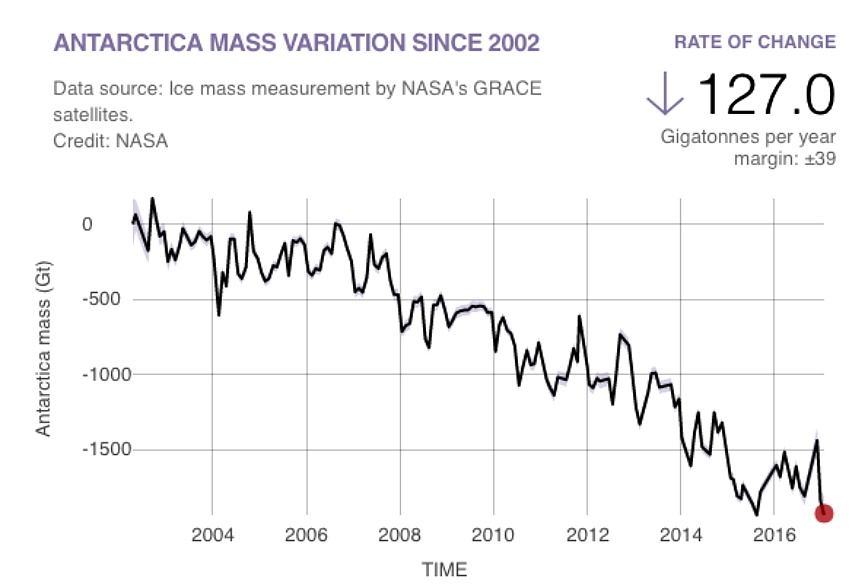
The North Polar Cap – the Arctic – is far more obvious in terms of visually realizing our loss. Since the late 1880’s the decline of ice mass at the North Polar Cap is nothing less than startling. Measured as Ice Mass Concentration, Figure 5 reveals the dramatic shrinking of the northern ice into the 21st century, this due nearly entirely from warming of both the waters and air surrounding our polar regions.
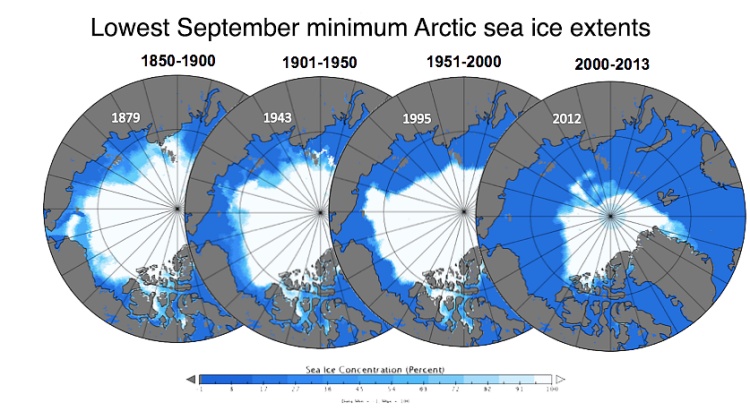
As previously mentioned, the demise of ice at the Earth’s poles has serious consequences for the future of the Earth, both in terms of climate and in habitability, among these:
1) ice melting increases the sea level to substantially higher levels that coastal population centers can tolerate;
2) pure fresh water in the form of ice melts into the non-potable salt waters of oceans and seas;
3) reflectivity of the Earth drops significantly, thus increasing the overall heat absorbed from the sun, rather than being deflected.
Sea Level Changes from Melting Ice
There is no doubt that there have always been fluctuations in the sea level across the globe, these changes due in part to geologic events for major global changes and many times meteorological events specific for local increases. However, the sea level across Earth has been steadily rising since the beginning of the 20th century, to an average of roughly 6-8 inches since 1900. (USGCRP (2017). "Climate Science Special Report. Chapter 12: Sea Level Rise". Science 2017.globalchange.gov. Retrieved 2018-12-27). In fact, projections for sea level increases up to three feet by the end of the 21st century appear to be firmly supported in the scientific data (Global and Regional Sea Level Rise Scenarios for the United States (PDF) (Report) (NOAA Technical Report NOS CO-OPS 083 ed.)
In 2014 the Intergovernmental Panel on Climate Change attributes 44% ofthe rising sea waters to the melting of glaciers worldwide, including those of Greenland and Antarctica. As the glaciers melt from frozen to liquid state, the fresh water contained in them mix into the salty oceans and seas, increasing sea levels and diminishing even further the amount of potable water on the planet.
Our oceans serve as a thermal valve against overheating, being responsible for absorbing and retaining over 90% of the excess heat that the Earth receives from the sun, and generates internally from geological processes.
The melting of the Antarctic ice sheet is particularly worrisome and dramatic, with over 4.3 gigatons of ice melting annually into the waters surrounding it. Equally obvious is the melting of ice over Greenland, attributing 15% of the total water added presently to the oceans around it; in fact it is now accepted (Mosbergen, Dominique (2017). "Greenland's Coastal Ice Caps Have Melted Past The Point Of No Return". Huffington Post ) the Greenland glacial demise has reached the point of no return: the melting is irreversible and ultimate the Greenland glaciers will soon be gone.
Keep in mind that over ten percent of the world’s population currently lives around the coastal areas of the world that are earmarked for coastal flooding from sea level increases during the next century; thousands of islands and island nations will be under water if the current projections for sea level increases hold.
Since the last ice age, some 20,000 thousand years before present, the sea levels across the globe have risen over 410 feet, this being primarily of course from the melting of the huge quantities of the Laurentide Ice Sheet and other temperate glaciers. Nonetheless, the waters continue to rise from unnatural root causes, the principal being the influence of over-population and the carbon dioxide emissions from the “progress” of modern civilization.
Reduction of Fresh Water by Melting into Salty Oceans
There is a limited supply of fresh water available on this planet.
Of all Earth’s water, 96.5% of it is salt water and will never be suitable for drinking or human consumption. The remaining 2.5% is potable and found in only a few sources, among them glaciers. At present, nearly 69% of all fresh water is locked up in frozen form in the world’s glaciers; additionally a small percent of fresh water is found at high altitude glaciers – mountaintops – which have also been influenced by climate change and are melting at a very rapid pace.
In the case of high elevation glaciers, most of this fresh water will melt into small creeks, then rivers and larger bodies of water and remain as potable water for long periods. However, the 69% of glacial water – when melted – flows into the oceans and ultimately will be mixed in with non-potable salt water.

All objects – planets, moon, Earth – in the solar system has a reflection value known as “albedo.” This value defines the “brightness” of reflected light from a world’s surface compared to the amout absorbed. A “perfect albedo” would be 1.0, meaning that 100% of the light from the sun is reflected back into space, a value which physically cannot exist.
Earth has an albedo of 0.3, meaning that 30 percent of the sun’s light is reflected back into space while the remaining 70% is absorbed into the surface by plants, ground and even water. This balance of heat absorbed versus heat reflected is the basis for climate and weather in a balanced, sustainable world. If the Earth was completed encased in ice, the albedo of our planet would be quite high – 84%. But the primary ice on our planet is confined to the two polar masses, particularly the south polar cap, and some seasonal snow and ice; any drop in those reflective sources, and the albedo goes down.
Thus, the heat goes up.
Additionally, any increase in aerosol gases in our atmosphere will result in absorption of heat energy from the sun, notable among theses is carbon dioxide which is increasing at an alarming rate. Rebecca Lindsay, (State of the Climate: Atmospheric Carbon Dioxide, NOAA/American Meteorological Society, 2018), revealed that in 2017 the amount of carbon dioxide concentration in our air is now at 405 parts per million (ppm); the highest that the Earth has seen in at least 3 million years. In the past 800,000 years, the concentration has never been this high (see Figure 7, below)

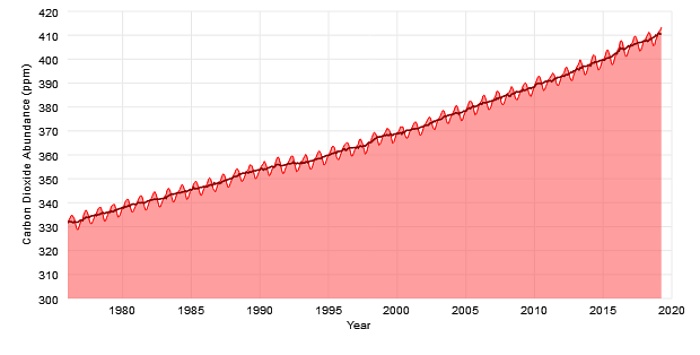 Figure 8 – The steady climb of carbon dioxide in the atmosphere since 1975
Figure 8 – The steady climb of carbon dioxide in the atmosphere since 1975Climate change is not myth. Global warming is not science fiction.
The daily average worldwide temperatures are being measured by many sources. According to an ongoing temperature analysis at NASA's Goddard Institute for Space Studies (GISS), the average global temperature on Earth has increased by about 0.8° Celsius (1.4° Fahrenheit) since 1880. It may not seem like a lot on your thermometer, but this – coupled with the out of control release of greenhouse gases into the atmosphere – has resulted in catastrophic and perhaps irreversible consequences for the future of Earth.
Eighteen of the nineteen warmest years on record worldwide have occurred since 2001, with 2016 being the hottest on record. Each year, the average temperature bumps up ever-so-slightly, just slow enough that most people do not notice. A one-degree global change is significant because it takes a vast amount of heat to warm all the oceans, atmosphere, and land by that one degree. In the past, a one- to two-degree drop was all it took to plunge the Earth into the Little Ice Age. A five-degree drop was enough to bury a large part of North America under a towering mass of ice 20,000 years ago, the Laurentide Ice sheet of the last major ice age.
So let us stop denying all of the climate change evidence – stop pretending that some “Green New Deal” will make any difference whatsoever this late in the game of climate change – and examine what we are faced with today, because the human race in its endless population explosion and greed did not pay attention in the 1970’s when efforts to reduce both population growth and greenhouse gas emissions were largely ignored.
What do the coming years look like as we journey ahead in our present path of human consumption and proliferation? Let us look at the recent years of 2018 to 2020 to see what might be in store.
2019 – European Heat Records
In early summer 2019, record heat began to scorch most of Europe and places normally minimally affected from intense heat index readings and suppressing waves of humidity and heat. France, Germany, Poland, the Czech Republic and Spain – along with most all others in the European community began to realize what was to be the hottest summer of record. As early as June nearly every monthly and annual temperature records – record highs – were broken.
Deaths from heat have been recorded in places that never experience heat-related mortality, while heat rose to an incredible 105.6 degrees F in Clermont-Ferrand, France, this only to be topped by that of the small town of Villevieille where it reached a whopping 113.2 degrees on June 27, 2019. French President Emmanuel Macron mobilized his “entire government” to deal with the unprecedented heat wave, including the closing of some public events and schools; the FIFA Women’s World Cup soccer matches went on as planned.
The heat sparked wildfires similar to those so familiar to California in the western United States; the worst fire in two decades has burned over 10,000 acres in Catalonia, Spain.
Compounding Europe’s ability to deal with this surging heat is the population density and the fact that nearly all population now resides within urban areas with buildings, roadways, structures….steel and concrete and no relief from green and cooling forests. Climate scientists are stating fairly conclusively that this situation is only getting worse, as seen from the 2003 heat wave and the previous 2018 heat wave. Estimates of deaths from heat in Europe in 2003 were between 30,000 and 70,000 persons, the hottest period ever recorded since the 16th century. Heat stroke and the simple difficulty of breathing in the heated air affected the elderly far more than any other faction of the population.
Europe, because of the normally mild summer temperatures, is particularly prone to heat related fatalities; Germany for example has only an estimated two percent of its homes air conditioned. The departure from the normal expected heat can be particularly harmful to those not expecting such searing and long-lasting heat.
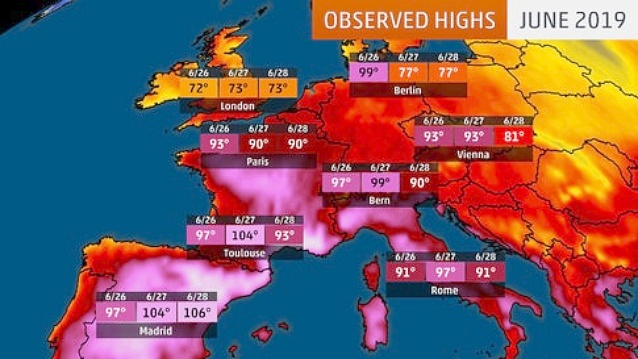
-----
Scientists in Europe, basing their speculation on the sudden change in climate and temperature on that continent, surmise that similar heat waves should be expected on a frequency five times what used to be considered normal. Even infrastructural efforts, European governments are researching ways to combat heat decay that can affect bridges, towers, rail tracks and other essential structures for human activity. Because of the fear of buckling, new restrictions have been placed on the hitherto untethered driving along German’s famous Autobahn.
Other Regional Examples
Because of the Earth’s axial tilt, when summertime blazes forth in the northern hemisphere, it is winter in the southern continents and lands. Even still, the winters in Australia and other south hemisphere countries and mild and even warm. Summers, by comparison to those of the northern lands, are equally brutal and record heats are piling up years down under.
In the north, Greenland blasted to over 40 degrees warmer than normal for days in June 2019, this accelerating the melting ice sheet that covers most of that land. Extreme heat in India has killed hundreds in 2019 with record temperatures recorded for prolonged periods longer than ever before seen. Even within the Arctic Circle in 2018 were dozens of wildfires cause by hot and dry conditions not normally experienced in those mostly frigid lands.
Baked Alaska
Nowhere else can compare via contrasts the scorching heat to Alaska; normally a mild and even cool getaway from the summer extremes, the entire extent of this huge state was under a heat wave throughout the summer of 2019.
On July 4, temperatures rose to nearly 100 degrees in many major towns and cities in Alaska, resulting in hundreds of spotty wildfires surging to crews unfamiliar with searing heat. At the Anchorage International Airport, the high hit 90 degrees, far in excess of what meteorologists thought would be a record never to be broken – 85 on June 14, 1969. The average high temperature for this region of Alaska is only 65 degrees.
The Fourth of July celebration was seen without fireworks due to the extreme conditions of 2019, with the state Fire Marshall banning the sales of fireworks because of extreme fire danger from very dry and hot conditions. Among the 23 fires that scorched the magnificent landscape of Alaska was the Swan Lake Fire, which consumed over 100,000 acres of land.
On a somewhat encouraging note is that at least Fairbanks, Alaska, has experienced all this before; in 1919 the high temperature on July 28 hit a whopping 99 degrees, and again in 1994 when it flirted with the mid-90’s. Fort Yukon, located in the central part of the state, recorded a temperature of 100 in 1915 for the state record.
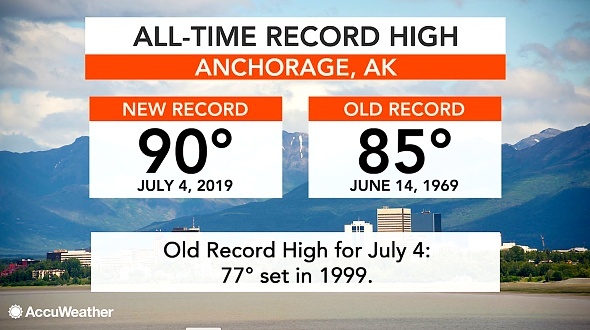
All of this is foreboding to say the least. It is depressing….and it should be. Sixty years ago there were a handful of scientists who predicted that if unchanged our world might accelerate climatologically into an irreversible state. Sixty years ago, the world had its hands full of the Vietnam war and other diversions that made “the future” seem like just that: a fantasyland in which other people lived.
But this was not a myth…..this is reality and not science fiction.
We are facing the reality of a world growing warmer by the year and hotter by the century to a point where the human race may not be able to survive the conditions.
Every aspect of this is caused by humans – none of the other billion species of living things on this planet has caused this, only humans. This point is covered thoroughly in my book Fission Population (Sherrod, P. Clay. Fission Population: Overpopulation and destruction of natural resources and ecological balance of the planet Earth, ASO 2019). We have destroyed ecological and climatological balance through two oversights:
1) overpopulation and failure to curb the infinite demand for finite Earth resources;
2) destruction of the environment that provides for stable climate, clean air and water, and unlimited resources.
Following is a brief scenario (such an over-used word today) of what likely will take place following our unwillingness and/or inability to rectify the cataclysm of global climate change.
The Heat Goes On – the presence rate of increase of temperature increase is moving from a linear growth to an exponential climb; this is caused by two factors:
1) Overpopulation – this requires the removal of trees and other oxygen-providing plants to provide room for houses, roads, parking lots, commercial buildings excavations, harvesting of resources, etc., while at the same time contributing to the over-abundance of carbon dioxide which contributes to greenhouse warming.
2) Emission of Greenhouse gases – in addition to carbon dioxide emissions from breathing of billions of humans, we are pouring harmful heat-retaining gases from industrial waste, vehicle emissions and burning at an ever-increasing rate. Carbon dioxide has increased 40 percent; methane 160 percent; nitrous oxide 20 percent. Each of these gases contributes to the retention and transfer of heat within the Earth’s atmosphere; together the form a catastrophic barrier to prevent radiative cooling the Earth into space.
Glaciers Melt – the increase in atmospheric heat retention causes the oceans to warm and the air to warm, both factors in glacial degradation. Greenland has virtually lost all of its glacial ice and will likely never regain that; the northern polar regions’ ice thickness has depleted to less than one-half. The potentially potable fresh water locked up in glacial ice is virtually lost once it merges with sea water. Worse even is the reflective effect of the glacial ice is lost, thus causing drastic increase into the already warming blanket of air captured by the Earth’s atmosphere.
Evaporative Index Increases – the increasingly warm atmosphere begins to accelerate the evaporation of the lakes, streams and oceans and thus disrupts the nature water cycle. The increased evaporation leads to locally torrential rains, violent storms and regional weather pattern uncertainties. In many locales, increased evaporation cannot be followed by rain because of the upward flow of heated air from the super-heated ground thus the moisture becomes locked into moisture-laden clouds.
Clouds increase – as the moisture-laden clouds rise rapidly upward from heat-induced rapid evaporation of water sources, the clouds accumulate and thicken; one would assume at first that the thicker clouds would result in cooler temperatures, but just the opposite occurs.
Solar Radiation Absorption Increases - the Greenhouse Effect demonstrates that sunlight enters the atmosphere as high energy ultraviolet radiation, is absorbed by the ground and re-radiated as a much weaker energy – infrared. The less energetic wavelengths of infrared are trapped by the Greenhouse gases and the moisture in the clouds and the heat is encapsulated by the Earth’s own air.
Temperatures rise per Greenhouse effect – not only does the ground absorb the solar radiation and result in radiative warming, but likewise does the air and the moisture-laden clouds increase in global temperature. At a critical point the upward-rising warm air becomes a more powerful vortex than the gravitational pull on cooling moisture which normally would fall. In short, it becomes to warm to rain.
Fresh Water Decreases – potable water that once filled fresh water sources becomes locked in clouds, diluted in the salty seas, and becomes unable to recycle/perk as per the natural water cycle for Earth.

Carbon Dioxide Increases – (along with the other greenhouse gases noted on page 15); particularly troublesome is carbon dioxide because of human population growth and the disruption of the cycle of photosynthesis. As described, human population requires housing, roads, buildings and large open areas which are cleared of green plants, the very source of most present day oxygen and one major factor that once kept the increase of carbon dioxide in balance. The green plants utilize carbon dioxide as their resource to make oxygen. Two deciduous trees can provide a year’s worth of oxygen for one person, and they consume an even great amount of carbon dioxide in the process. But we are destroying forests and jungles vital for the photosynthesis cycle and for the cleansing of greenhouse gases from the environment.
Plants Decrease from Ecological Balance
Gases percentages (O and CO2) begin to fail – the photosynthesis cycle begins to be insufficient to provide oxygen for an increasing human population, and the carbon dioxide from breathing as well as from industrial activity increases as human activity continues to indiscriminately remove green plants from the landscape of the planet. All the while, the cooling effect of plant life diminishes, contributing to the rapidly increasing level of heat in the surrounding air.
Human Population Continues Unchecked – as the environmental balance rapidly declines, the atmosphere warms and the lack of potable water increases due to unpredictable rainfall and careless human waste. All the while the number of humans exponentially increases on the surface of Earth; so many people at this time – nearly 8 billion – that even with no-growth population (every couple would conceive only two children), the number of humans on the planet within the next century will smother out the available oxygen and water for all to survive.
A Grim Conclusion
There is absolutely nothing “pretty” about the picture that I have just painted. In fact it is disturbing….it is quite ugly. But it is the truth about the state of our planet and the future of the human race.I have written this because fifty years ago I began traveling, lecturing, and explaining the upcoming downfall of the human race if climate change and over-population was not examined and some efforts were made to curtail both. At that time, these things seemed like that myth – like that science fiction that I keep referring to – to all who heard my lectures. Some people politely listened, nodding their heads as if to agree, others suggested that all this climate change and human population talk was nothing but poppycock and went about their ways of life.
At that time such topics as this were in the future – they WERE science fiction in 1965. People either assumed that there was nothing they could do, or that none of this mattered because frankly, they would all be dead by the time that any of this could come to fruition.
So – today – we have reality. The reality of a super-heated planet that perhaps can become incapable of supporting human life is approaching rapidly and within a few years may be upon us. The reality that we have simply “had too many children” has not sunk in to the masses of humans yet. In fact, celebrities are making a point that families should once again have five to eight children to have “complete lives.”
Children are wonderful to spawn in this sea of life, but we are doing so without giving any thought to what this life may be for them in only a few years. For one, I do not want my children, nor their children, gasping for every breath, competing for ground on which to live, and sweltering to die in the heat of an arid world in which a soothing rainfall at night is nothing more than science fiction.
P. Clay Sherrod, July 2019
The Light from a Night 2000 Years Ago
by
Dr. P. Clay Sherrod
I find myself drawn into the cold night air of Decembers, and have for many decades, as the caroling of Christmas anthems from antiquity fill my senses. Christmastimes long gone, I see families assembled to the warmth of a fireplace, a small fresh tree adorned with handmade ornaments to herald the spectacular feelings of this season of our lives. As the winter wisps of wind entwine to melody, my eyes are drawn to the skies above, dark and transparent as they might have been some 2000 years ago, the same stars that silently shown above a simple stable in Bethlehem.
Above me are millions of stars, galaxies, nebulae, comets and distant planets that fill our skies, in our lifetimes never changing. The patterns they draw against the inky darkness are the same patterns observed since the advent of mankind on Earth. And I wonder: which of these might have been the Star of Bethlehem? The signal for the scholarly Maji to leave their homelands and travel to meet the new King....the sign of the skies from which the angels heralded the birth of Jesus to the lowly shepherds who watched their flocks by night. Any of them, perhaps all of them, were the beacon of hope and salvation for a world gone wrong two millenia ago.
Then my fantasy turns to reality, for I have been taught both religion and science, and I clear my senses to realize that the light that I see from these tiny orbs of night is not "new light"; rather it is ancient light, the farther the object in space the longer it has traveled through space to reach my eyes, to pique my senses. Light from the closest star to our Earth, only 2.3 light years away has traveled for 2.3 years to reach us, at its amazing speed of 186,000 miles per second. The distance that the light travels in ONE year, about 12 trillion miles, equals one light year.
Above me are the Pleiades and the Hyades, two remarkable naked eye star clusters - associations of stars held together by gravity and all orbiting one another. One appears to the naked eye as a tiny "dipper", the other as a large "V" in the night sky. The V-shaped Hyades is only 130 light years distant, while the smaller dipper of the Pleiades is 450 light years distant. What I am looking at, in fact then, is 130 years old and the other 450 years old.
I have above me a time machine through which (and my imagination) I might travel back in time, say to the time of the birth of Christ 2020 years ago. So, as we scan the night sky full of so many intriguing guiding lights, which might be at a distance of about two thousand light years? What light that I see might have left toward Earth about the actual time of the first Christmas? Oddly, with so many stars and so many deep sky objects, the answer is not easy: there are not that many that can be seen with the naked eye...the farther an object is away from us, typically the fainter it appears to the eye.But there is ONE object - the mighty Orion Nebula - that is located at about that distance, some 1800 light years. The middle glowing object in the "sword" of Orion, a constellation bright in our winter skies, is this celestial nursery, a place where stars are "being born" our of the hydrogen gases of space. In the accompanying photograph, obtained by the author at Arkansas Sky Observatories on Petit Jean Mountain, nearly all of the stars seen within the pink hydrogen gas are relatively new stars, coalesced and slowly forming into balls of nuclear fire, just like our sun until they, too, become suns many trillions of miles away. 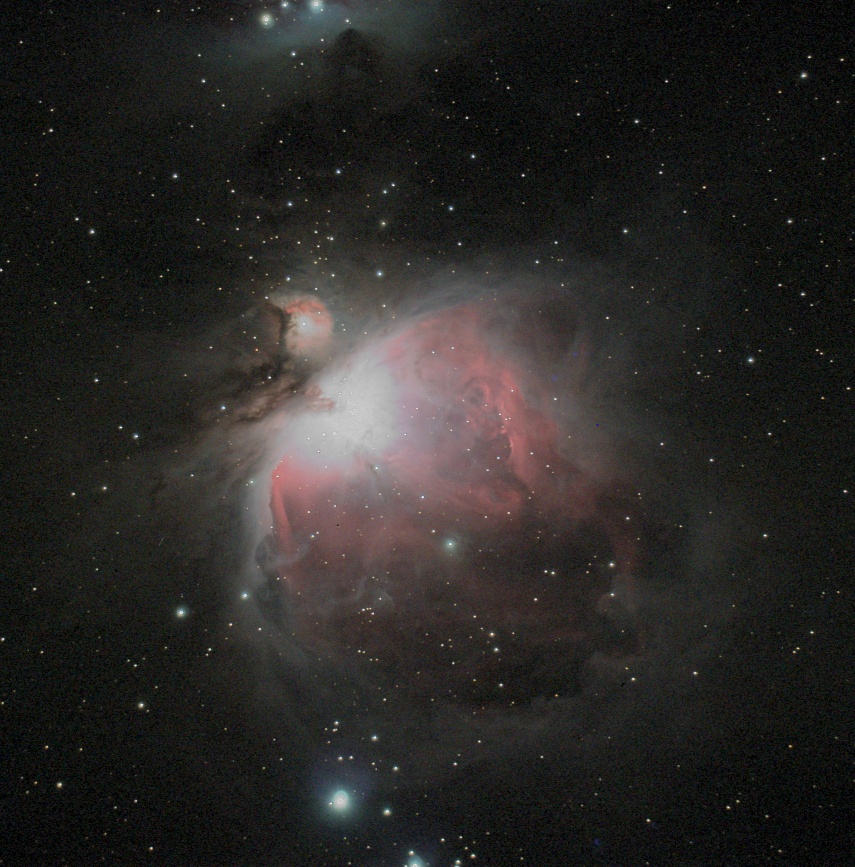
Messier 42, The Orion Nebula, photographed by P. Clay Sherrod at Arkansas Sky Observatories
130mm f/5 astrographic telescope, two 90 second exposure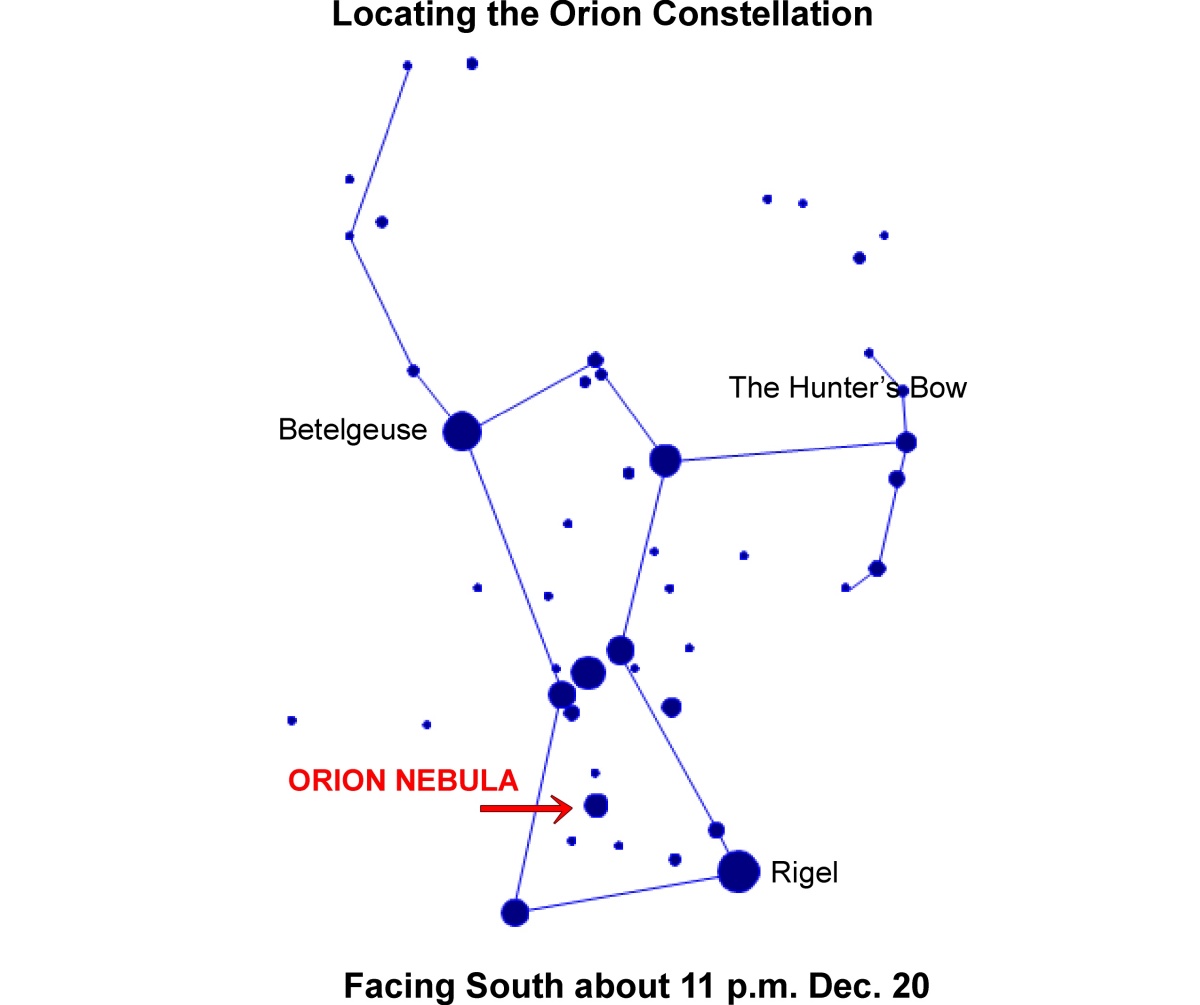
The diagram shows the star pattern of the constellation of ORION and the location of the "belt" and the Orion Nebula.
As we are not certain as to the exact distance of the Orion Nebula, it can only be approximated that the light that your eyes witness the next dark and clear night left that tiny area of sky just as a tired and tattered couple wandered their ways through the dirt roads of ancient Bethlehem, and ultimately to a stable where the Bible tells us that Jesus Christ was born at this time, some 2000 years in the past.
Your mind - with a little help from the stars above - have given you on this winter's night a time machine of Biblical proportions.
P. Clay Sherrod, December 2019
*********
A Life's Voyage Through the Sky
Sixty Years a Mariner in Space
by Clay Sherrod
All people, when they reach the age that I am today, ask the question:
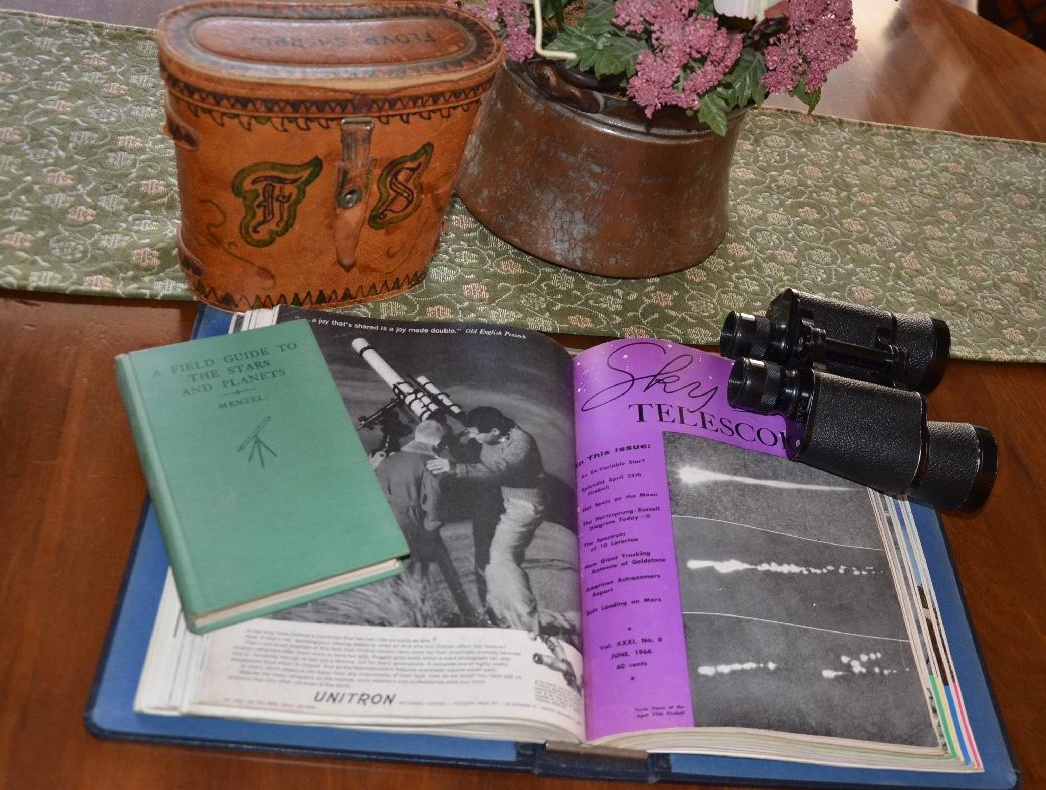

-------------
By 1965, my captivation with astronomy and space was at full throttle and I had ordered my first telescope: a magnificent four-inch Unitron refractor, for which I would endure a savage one year backorder while the instrument was made in Japan. It was during that long wait that I taught myself the workings of the night sky, the fundamentals of astronomy and the magnificent catalog of constellations, their history and lore and the stars of which they are comprised and the ancient myths and legends associated with them all.

The First Telescope
And it was a dandy to a young man after waiting a year; saving from working two jobs in school,
the construction of my telescope in Japan
meant month after month of constant drooling over the ad in Sky & Telescope from which I selected my Unitron
--------------
The memories of my mentors in life....discovery of the sky, then the stars, and onto the richness of life
I sail away as I float this life through the oceans of space.
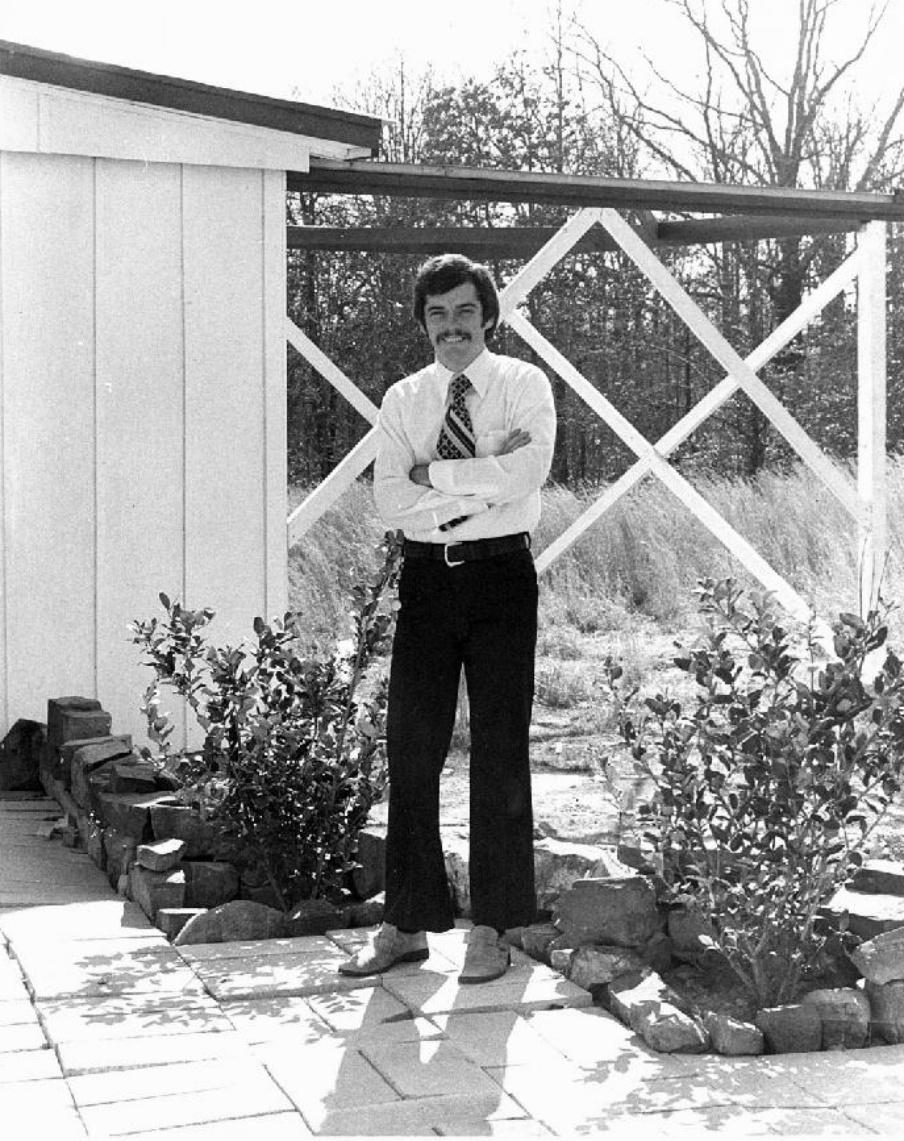 1971 - P. Clay Sherrod
1971 - P. Clay Sherrod------------
